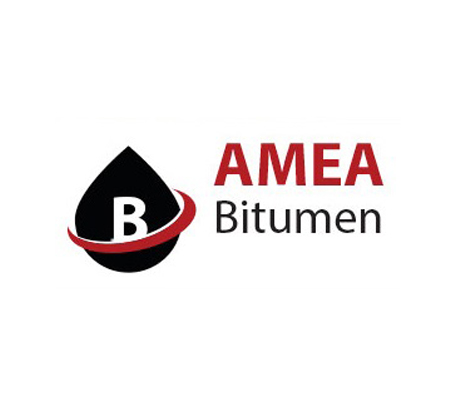Two of the most widely-used drilling techniques are mud and sonic rotary drilling. Though similar in terms of purpose, these two methods carry fairly distinct differences in terms of approach, equipment, and results. This article explores and compares the two techniques, sonic drilling, and mud rotary drilling, focusing on their strengths, weaknesses, and the geological conditions they are best suited for.
The Difference Between Sonic and Mud Rotary Drilling
Sonic and mud rotary drilling techniques have distinctly different approaches. In this part, we will discuss in detail the variations of these two approaches and the various factors that distinguish them.
Appearance
Sonic rotary drilling demands the utilization of a specialized sonic drilling rig, a tool composed of a mast, a drill string, and a sonic head that creates high-frequency vibrations to obliterate even the most persistent of subsurface formations.
By comparison, conventional mud rotary drilling rigs feature a vertical mast connected to a rotary table, with the drill string connected to the kelly and finished off with a sharp cutting bit to penetrate the earth.
Applications
Sonic drilling is a process that is often employed for a variety of reasons in the fields of environmental science, geotechnical exploration, and mineral investigation. It is highly reputed to be an efficient method of securing undisturbed samples for soil sampling, well installation, and site investigations.
On the other hand, mud rotary drilling is usually used for water well drilling, oil and gas exploration, and geothermal drilling, primarily serving to construct boreholes through which to extract fluids or formations beneath the surface. These two forms of drilling offer two distinct, yet essential services for mankind.
Chemical Compositions
Sonic drilling employs no chemicals or fluids but instead harnesses high-frequency vibrations to break down materials and obtain samples. Unlike its counterpart, mud rotary drilling utilizes drilling fluids or ‘drilling mud’, either water-based or oil-based, to cool, lubricate, and efficiently collect cuttings from the site. These fluids offer a myriad of advantages to rotary drilling, greatly increasing its effectiveness.

Benefits
Sonic drilling is a method with numerous advantages, such as faster rates of penetration, minimal disruption to neighboring formations, and the production of high-grade, unaltered samples.
In contrast, mud rotary drilling offers added benefits, like improved borehole stability, efficient removal of cuttings, and the management of subsurface pressures. Both of these methods are attractive options for drilling, depending on the specific requirements of the project.
Procedure
Sonic rotary drilling involves lowering a sonic head into the ground and using high-frequency vibrations from the drill string, which weaken and break down the subsurface formations. As a result, cuttings are circulated to the surface either by way of compressed air or water. Core barrels may be used to collect samples when conducting this type of drilling.
Conversely, rotary drilling mud entails rotating the drill string, with the cutting bit, to break up the formations. The drill string is flooded with a mudflow which helps to transport these cuttings to the surface. Depending on the project requirements, various techniques such as air rotary drilling or reverse circulation drilling may be used.
Cost Considerations
Sonic drilling is typically more costly than mud rotary drilling, due to its advanced technology and requirements for specialized equipment. Though the upfront costs may be higher, sonic drilling can often be more cost-effective in certain scenarios, since it provides faster drilling rates and reduces downtime.
Mud rotary drilling is generally a more economical choice than sonic drilling since it doesn’t require as much specialized technology or as many specialized tools and materials. However, the actual expenditures can vary depending on factors such as the drill site’s depth and complexity.
Environmental Impact
Sonic rotary drilling is an efficient and eco-friendly methodology, as it eliminates the need for mud or drilling fluids that may be damaging to the environment. Its minimal environmental impact ensures that less waste and disturbance are created in the surrounding area.
Opposite to sonic drilling, mud rotary drilling requires the use of drilling fluids or mud. This presents potential environmental concerns due to the presence of additives and chemicals used in the drilling process which may contaminate groundwater, soil, or surface water if not managed correctly. The potential environmental hazards posed by mud rotary drilling mean that sonic drilling is often seen as a preferable drilling method.
Safety Measures
Sonic drilling is a safer method of drilling in comparison to its mud rotary counterpart. It eliminates the need for drilling fluids, thus mitigating the danger of workers coming into contact with hazardous chemicals and further mitigating the risk of pipes sticking or getting stuck, a major cause of potential safety issues for employees.
By contrast, mud rotary drilling necessitates complex procedures that necessitate additional safety precautions. Staff must treat drilling fluids cautiously to avoid any potential health or safety threats. Furthermore, the potential for slips, trips, and falls is increased due to the presence of the drilling fluids, making additional vigilance vital.
The Role of Gilsonite in Sonic and Mud Rotary Drilling
Gilsonite is a natural bitumen that has a variety of uses in both sonic and mud rotary drilling operations, providing benefits such as improved fluid loss control, lubricity, and shale inhibition. In sonic rotary drilling, it serves to stabilize the borehole, enhance sample recovery, and reduce the chances of a drill getting stuck, as well as diminishing the amount of drilling fluid lost.
On the other hand, in mud rotary drilling, its application as an additive helps to regulate fluid loss in more permeable formations stabilizes the hole, lowers the torque and drag, and boosts the lubricity of the drilling fluid. As a result, Gilsonite proves vital to the success of both sonic and mud rotary drilling, significantly improving efficiency and effectiveness.
Conclusion
It is paramount for those engaged in a variety of drilling operations to differentiate between mud and sonic rotary drilling approaches. Sonic drilling provides speed, conservation, and reliable sample collection, yet it is not exempt from limitations. Mud rotary drilling, in turn, has demonstrated the ability to cope with volatile geologic formations and offer cost-efficacy, though it, too, is not without weaker points. Ultimately, the selection between the two approaches needs to be driven by the unique needs and geological properties of a project.





